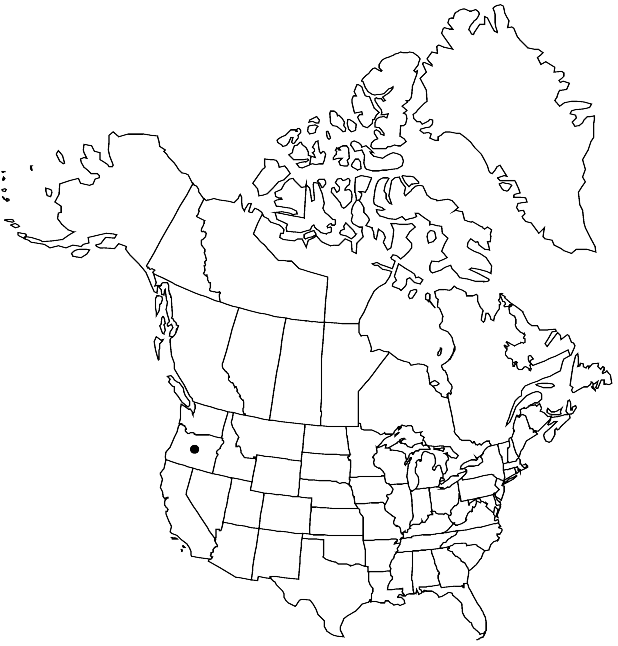Boechera hastatula
Novon 13: 386. 2003.
Perennials; short to long-lived; apomictic or sexual; caudex often woody. Stems 1–4 per caudex branch, arising from margin of rosette near ground surface, 1–3 dm, glabrous throughout. Basal leaves: blade linear-oblanceolate to oblanceolate, 1–3 (–5) mm wide, margins entire or minutely toothed, rarely ciliate near petiole base, trichomes (simple), to 0.8 mm, surfaces pubescent or glabrous, trichomes short-stalked, 3–6-rayed, 0.07–0.2 mm. Cauline leaves: 4–15, not concealing stem; blade auricles 0.5–2.5 mm, surfaces of distalmost leaves glabrous. Racemes 12–40-flowered, usually unbranched. Fruiting pedicels reflexed, abruptly recurved near base, 4–8 mm, glabrous. Flowers divaricate to pendent at anthesis; sepals pubescent; petals lavender, 5–6 × ca. 1 mm, glabrous; pollen ellipsoid or spheroid. Fruits reflexed to closely pendent, usually appressed to rachis, often secund, straight, edges parallel, 0.3–0.42 cm × 1–1.5 mm; valves glabrous; ovules 46–60 per ovary. Seeds uniseriate, 1–1.3 × 0.8–1 mm; wing continuous, 0.05–0.1 mm wide.
Phenology: Flowering Jun–Jul.
Habitat: Igneous rock outcrops
Elevation: 1900-2100 m
Discussion
Of conservation concern.
Both sexual and apomictic collections of Boechera hastatula have been identified; further study is needed to determine whether they truly are conspecific. The species is known only from Baker and Wallowa counties.
Selected References
None.
Lower Taxa
"elongated" is not a number."thick" is not a number."dm" is not declared as a valid unit of measurement for this property.
